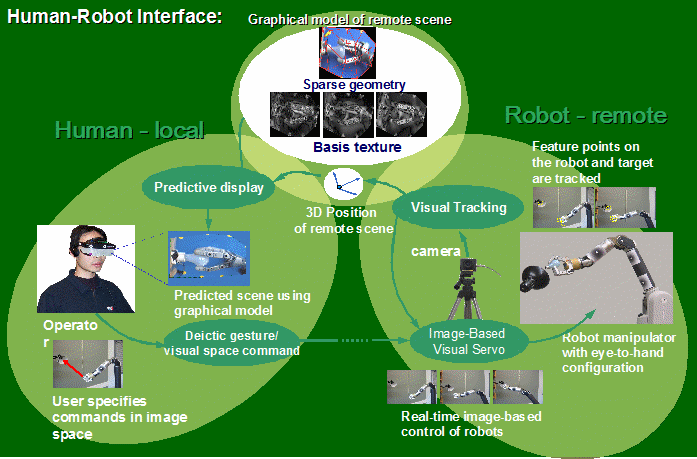|
DescriptionCurrent robots neither have humans’
sophisticated decision-making capabilities, nor their motor
skills and dexterity, but can travel further and survive space
environments far better than us. Historically, human presence in
space for exploration is preferred because of the intellectual
capacities of humans. However, human missions are both expensive
and have safety risks. Both man and unmanned missions could
benefit from better robotic/autonomous capabilities. For instance
even during manned space station and shuttle missions, astronaut
accomplishments are limited by the complexity of operating
instruments and robotic equipment. The problem with full autonomy
in space is the huge gap between artificial intelligence and
human intelligence. On the other hand, conventional telerobotic
technologies work poorly in the presence of large communication
delays. Hence, a challenge is to research and develop the right
balance of semi-autonomy for the remote robot while at the same
time improving the robot operator interface by simplifying
command languages, and enriching the sensory feedback to the
operator (tele-presence). Failure to address these issues could
lead to decreasing scientific return as mission control becomes
increasingly complex. Our main thesis is to bring the robotic
technology to fit the human by means of manipulators with
human-like properties, command interfaces utilizing humans’
ability for visual spatial reasoning, gesturebased commands, and
computer-vision based predictive display technology to provide a
high fidelity visual immersion in the remote environment.
TechnologiesPredictive display: Research shows that human performance degrades rapidly under delayed visual feedback. Predictive display compensates for this communication delay. 3D geometry and appearance models of the remote environment are automatically captured from cameras mounted on the robot in motion. By virtual rendering of the remote scene, the human operator will be immersed in the remote scene. Viewpoint changes and robot motion can be immediately rendered in response to the operator, eliminating the roundtrip delay in obtaining camera images. Instead the camera images are used indirectly to update the model with any change in the remote scene, or new areas explored. Uncalibrated visual servoing: The main idea is to improve performance by closing the motion control loop over external (visual) sensory information. While calibrated approaches provide a provably stable solution to control the nonlinear visual task equation, their main limitation is the need for a-priori system parameters in the control law. In contrast to calibrated methods, the uncalibrated approach requires no knowledge of the camera or robot parameters. The system model is captured and updated during manipulation. This is well suited for exploration where one cannot beforehand model the environment or the objects one finds and may wish to pick up and manipulate. |

